Why Is My Dachshund Limping? Expert Insights and Solutions
As a Dachshund owner, there may come a time when you notice your beloved furry friend limping. When this happens, it’s natural to feel concerned and to wonder about the possible reasons behind this discomfort. Limping in Dachshunds can be attributed to various causes, ranging from minor injuries to more serious health conditions.
In this article, we will explore and discuss some of the most common factors that might lead to limping in Dachshunds, so that you can better understand and address your pet’s needs.
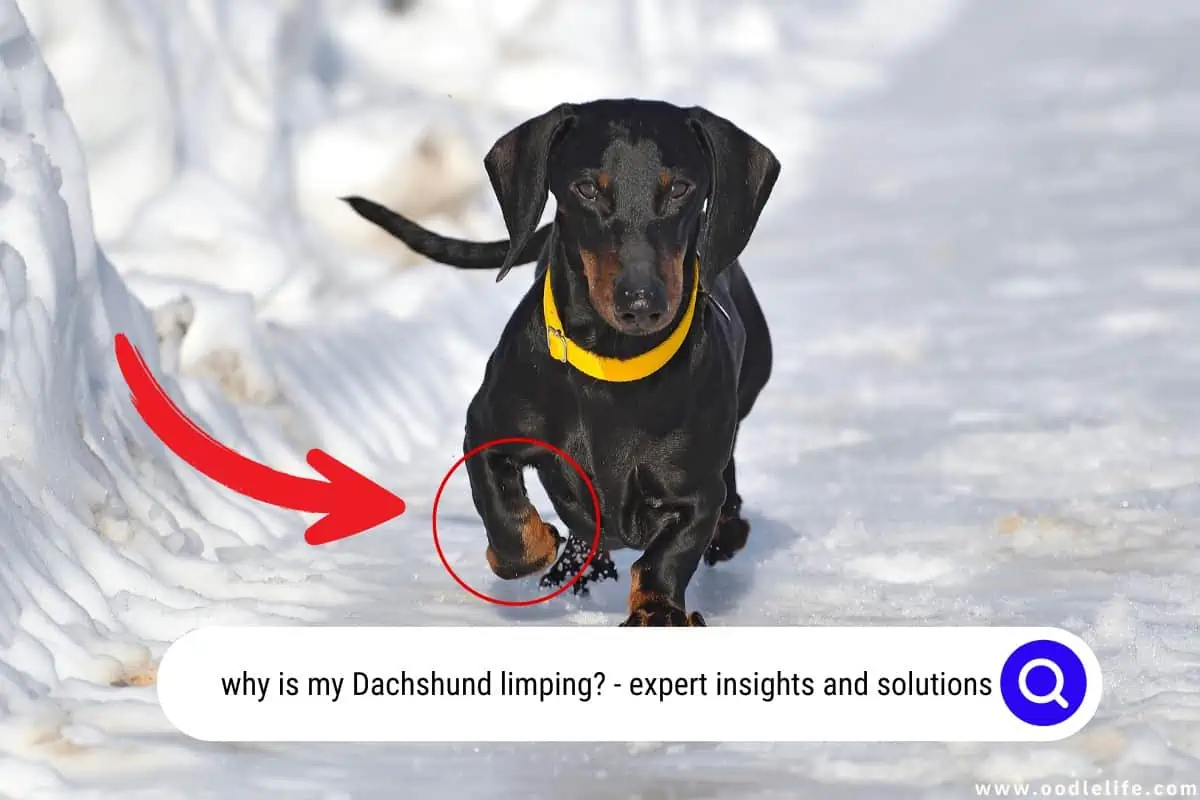
Dachshunds, with their elongated bodies and short legs, are predisposed to certain health conditions that might directly affect their mobility. For instance, one common health issue among Dachshunds is Intervertebral Disc Disease (IVDD), which can lead to nerve damage and, in some cases, cause limping or difficulty in walking. Additionally, Dachshunds are also prone to joint problems like hip dysplasia, and they may experience muscle strains or sprains more easily than other breeds due to their unique body structure.
Of course, not all cases of limping in Dachshunds are related to breed-specific health conditions. General factors such as injuries from accidents, overexertion, or simply stepping on a sharp object can also result in limping. The key is to monitor your Dachshund’s behavior and consult with a veterinarian if the limping persists or worsens, so that an accurate diagnosis can be made and appropriate treatment can be administered.
Remember that your furry friend depends on you for its well-being – and sometimes, all it takes is a watchful eye and a bit of tender loving care!
Possible Causes of Limping
There could be several reasons why your Dachshund is limping. In this section, we will discuss some possible causes, including injury, joint issues, and nail or paw problems.
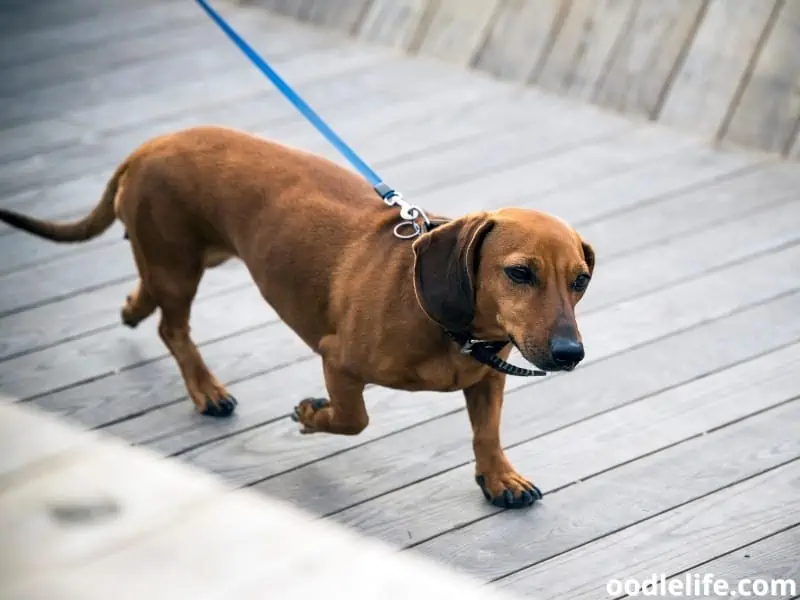
Injury
One of the most common reasons for a limping Dachshund is injury. Your furry friend might have experienced a fall, jumped from an elevated surface, or had an accident during playtime. Some injuries might be more apparent, like cuts or abrasions, while others could be more difficult to identify, like muscle strains or bone fractures.
Remember, Dachshunds are brave little dogs, so even if they’re in pain, they might not always show it.
Joint Issues
Dachshunds are prone to developing joint problems due to their elongated bodies and short legs. Two common joint issues are intervertebral disc disease (IVDD) and osteoarthritis. IVDD affects the discs in the spine, causing pain and sometimes even paralysis, while osteoarthritis is a degenerative joint disease causing stiffness, swelling, and discomfort.
Both of these conditions can result in limping. If you suspect your Dachshund has joint issues, it’s important to consult your veterinarian for proper diagnosis and treatment.
Nail and Paw Problems
It’s not all about bones and joints when it comes to limping; sometimes, the culprit may be hiding in plain sight: the paws! Overgrown or broken nails can cause pain and discomfort, leading to limping. Additionally, paw infections or foreign objects lodged between the toes can also cause your Dachshund to limp.
Regularly check your Dachshund’s paws for any signs of problems, and keep their nails properly trimmed to avoid these issues.
In conclusion, while there might be various reasons for your Dachshund’s limping, it’s essential to monitor their condition closely and consult your veterinarian if the problem persists or worsens. Early diagnosis and appropriate treatment can help your dog live a happier, more comfortable life.
Dachshund-Specific Concerns
Dachshunds, with their unique body shape, can be particularly susceptible to certain health issues that can cause limping. In this section, we will discuss two common conditions that can lead to limping in Dachshunds: Intervertebral Disc Disease (IVDD) and Patellar Luxation.

Intervertebral Disc Disease (IVDD)
IVDD is a condition that affects the spinal discs in a Dachshund’s back. Due to their elongated bodies and short legs, Dachshunds have a predisposition for IVDD, which can cause spinal cord compression, pain, and limping. Symptoms of IVDD can vary from mild back pain to severe paralysis depending on the location of the affected disc.
When dealing with a Dachshund with IVDD, it’s essential to limit their jumping and stair climbing to prevent further injury. Treatment options for IVDD can include rest, anti-inflammatory medications, pain management, and in some cases, surgery to remove the damaged disc material and stabilize the spine. If you suspect your Dachshund has IVDD, consult your veterinarian for advice.
Patellar Luxation
Patellar luxation is another common cause of limping in Dachshunds. In this condition, the dog’s kneecap (patella) slips out of its normal position, usually due to abnormalities in the bone structure or ligaments. This can cause discomfort, pain, and limping in affected dogs.
Dachshunds with patellar luxation may show signs such as:
- Sudden limping on a hind leg
- Skipping or hopping while walking
- Pain when bending the knee
Mild cases of patellar luxation can often be managed with weight management, exercise restriction, and anti-inflammatory medications. Severe cases may require surgical intervention to correct the knee joint positioning and prevent further complications.
Remember, if your Dachshund is limping, it’s essential to consult your veterinarian for a proper diagnosis and appropriate treatment options.
Diagnosis and Treatment
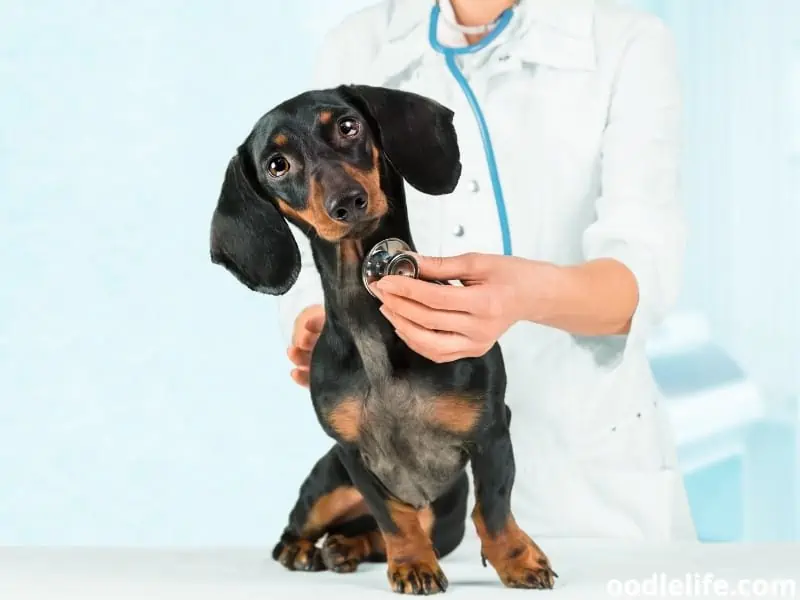
Veterinary Evaluation
If your Dachshund is limping, it’s essential to consult with a veterinarian for an accurate diagnosis. Limping can be due to various causes such as shoulder or elbow issues, or even cranial cruciate ligament injuries. A veterinarian might perform a thorough physical examination, imaging studies, and other tests to identify the reason behind the limping.
Once the cause is determined, an appropriate treatment plan will be recommended.
At-Home Care
Depending on the diagnosed issue, your vet may suggest at-home care to help alleviate your Dachshund’s limping. Some steps you can take include:
- Rest: Limit exercise and avoid strenuous activities that may contribute to the lameness.
- Medication: Administer pain relief or anti-inflammatory prescribed medications as directed by your veterinarian.
- Ice/Heat treatment: Apply ice packs or warm compresses to the affected area, as recommended by your vet.
- Weight management: Help your Dachshund maintain a healthy weight to avoid putting extra stress on their joints.
In any case, always follow your veterinarian’s advice for your Dachshund’s specific situation.
Surgery Options
In some cases, surgery might be necessary to address your Dachshund’s limping, particularly if there’s a significant issue with their joints or ligaments. Examples of surgeries include arthroscopy for elbow or shoulder problems or procedures to repair a cranial cruciate ligament injury. Your veterinarian will discuss the risks, benefits, and post-surgery care for any recommended surgical intervention.
Remember, it all starts with getting a proper diagnosis from your veterinarian. So, don’t delay and schedule an appointment if your Dachshund is limping. Although Dachshunds are known for their long bodies and short legs, there’s no reason they can’t strut their stuff with confidence and without pain!
Preventing Future Limping
To reduce the chances of your Dachshund limping in the future, it’s essential to focus on three key aspects: Weight management, regular exercise, and proper nutrition.
Weight Management
Keeping your Dachshund at a healthy weight can significantly decrease the stress placed on their joints and potentially reduce the risk of injuries.
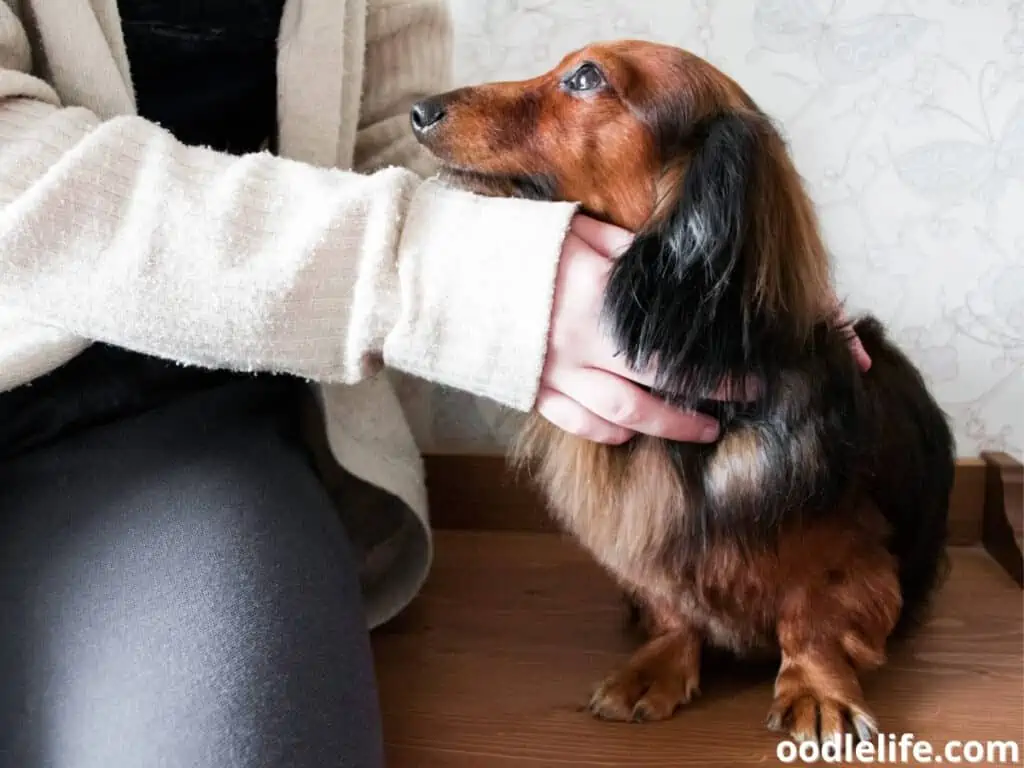
If you are unsure about your dog’s ideal weight, consult with your veterinarian for guidance. To help manage your Dachshund’s weight:
- Monitor their calorie intake and adjust portions accordingly.
- Provide them with lower-calorie or even specially-formulated weight management dog food.
- Avoid feeding them table scraps or an excessive amount of treats.
Regular Exercise
Despite their small stature, Dachshunds require regular physical activity to maintain their overall health. However, it’s essential to tailor their exercise regimen to their unique needs to avoid exacerbating any existing conditions or causing injury.
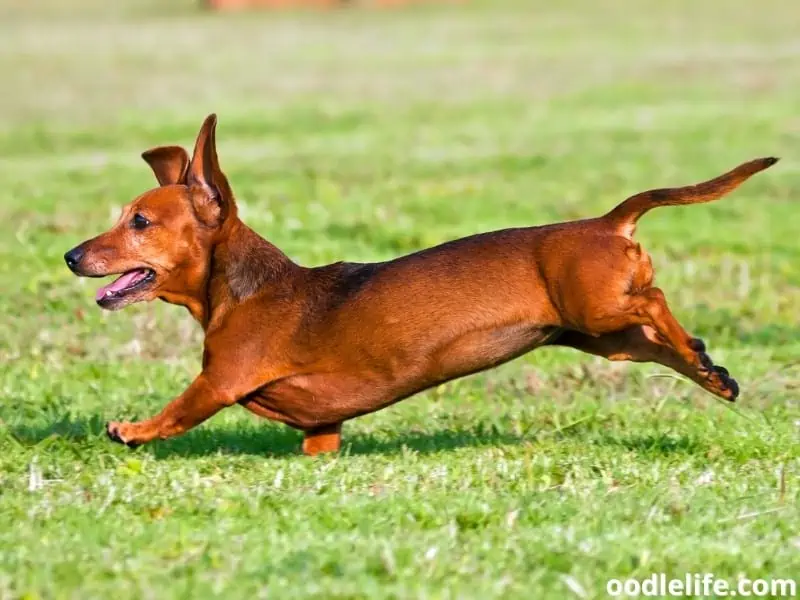
For your Dachshund:
- Opt for low-impact exercises such as walks on soft surfaces, swimming, or indoor games to promote joint health.
- Limit activities that may put stress on their long spine, such as jumping or climbing stairs.
- Create a consistent exercise schedule to help your Dachshund stay active and engaged.
Proper Nutrition
A well-balanced diet can greatly contribute to your Dachshund’s overall health and help prevent limping incidents.

When selecting a dog food, consider the following:
- Choose a high-quality dog food that’s specifically designed to meet the nutritional needs of small dog breeds.
- Look for dog food containing omega-3 fatty acids and chondroitin as these may help support joint health.
- Always consult with your veterinarian before making any significant changes to your Dachshund’s diet or introducing supplements.
Incorporating these guidelines into your Dachshund’s care routine can help ensure they have the best chance at enjoying an active, limping-free life!